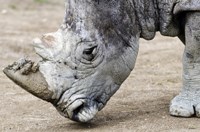Nambiti Private Game Reserve's rhinos dehorned
Criminal acts call for tough measures and that's the reason Nambiti Private Game Reserve's rhino population has been dehorned; the process having been completed on 22 November 2012.

"The whole exercise went off very well and I am extremely happy with the teamwork and professionalism we witnessed," said Clarke Smith, chairman of the KwaZulu-Natal game reserve. "It's distressing to have to tranquilise such magnificent creatures, but it is necessary and for their own good. I feel a lot more comfortable now that the entire rhino population had been dehorned."
This option, to beat the abhorrent and criminal act of poaching, was the result of much thought and debate. "We see dehorning as one of the strategies to address poaching and applaud any efforts to retain population integrity," said Francois du Toit, CEO of African Conservation Trust.
Pressure from external communities
"Our core focus is on addressing issues of pressure, particularly from external communities surrounding the reserves. To that end we hope to be able to work with Nambiti to develop community conservation agriculture as a means of building a natural resource-based economy, which will reduce pressure on pure tourism as a means of income for these communities."
According to veterinary surgeon Dr. Silke Pfitzer, dehorning a rhino does not hurt the animal provided the procedure is done correctly. Rhino horn, she said, was similar to finger nails and dehorning was like cutting a finger nail. Rhino horn grows back at the rate of about two inches every year which means this procedure has to be repeated.
"While it is sad to see these animals without their long horns, with tight security and guards, dehorning definitely helps deter poachers," she said, and explained that the monetary return on a little horn stump did not justify the risk. "Hopefully the poaching threat will be eradicated and then we can allow Nambiti's rhinos to grow their horns again," she concluded. A young female, a young adult bull, and a mature female underwent the process.